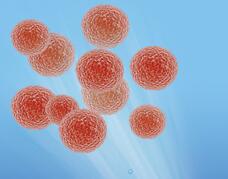INVITED REVIEW
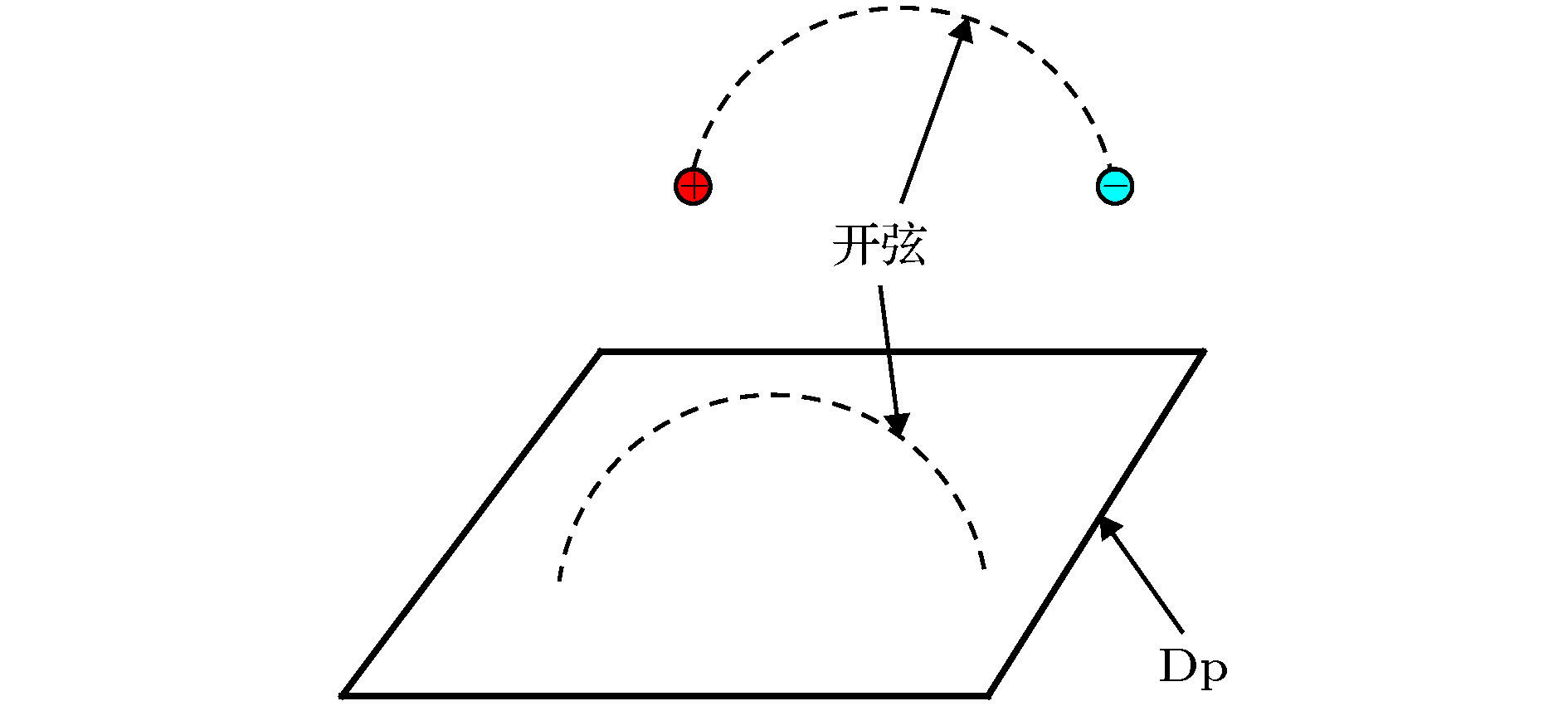
INVITED REVIEW
D-brane interaction, the open string pair production and its enhancement plus its possible detection
2020, 69 (10): 101101.
doi: 10.7498/aps.69.20200037
Abstract +
This review article reports the recent studies, based on a series of publications by one of the present authors along with his collaborators, regarding the interaction between two D-branes, the open string pair production and its possible enhancement in Type II superstring theories. Specifically, computed is the interaction amplitude between two D-branes, placed parallel at a separation, with each carrying a general worldvolume constant flux, and discussed are the amplitude properties, say, the repulsive or attractive nature of the interaction. When at least one of the D-branes carries an electric flux, the interaction amplitude can have an imaginary part, reflecting the instability of the underlying system via the open string pair production. The decay rate and the pair production rate are both computed. In addition, the enhancement of the latter is found when the added electric and magnetic fluxes are correlated in both magnitude and direction in a certain manner. In particular, when one of the branes is D3 and the other is D1, the corresponding pair production rate becomes large enough to be tested in an earthbound laboratory. Note that the pair production rate is related to the brane separation along the direction transverse to both branes, therefore, to the extra-dimensions with respect to the brane observer. So if the underlying string theory is relevant and the D3 can be taken as our own 4-dimensional world, measuring, say, the electric current due to the pair production and comparing it against the added electric and magnetic fields to see if the measurements agree with the prediction of the computations. This can be used to verify the existence of extra-dimensions. Further, this provides also a potential new means to test the underlying string theory without the need of compactifying it to four dimensions.
SPECIAL TOPIC — Carrying ion beam technology

2020, 69 (10): 102901.
doi: 10.7498/aps.69.20200029
Abstract +

2020, 69 (10): 107202.
doi: 10.7498/aps.69.20200012
Abstract +
The experiment is based on novel magnetic filtered cathodic vacuum arc (FCVA) technology, the effects of the structure and C contents of TiAlCN/TiAlN/TiAl composite coating on anticorrosion and wear resistance were studied. The macro/micro properties of the coatings were systematically characterized by SEM, XRD, XPS, electrochemical tests and friction equipment. The results show that, with the increase of C content,the form of C element in the coatings transforms from the TiAlCN solid solution to the coexistence of crystallized TiAlCN/amorphous carbon. The TiAlCN/TiAlN/TiAl coating with TiAlCNcrystallized/amorphous carbon nanocomposite structure demonstrated excellent performanceby combining the advantages of each layer, which the hardness reaches an ultrahigh leveland the amorphous carbonwith excellent self-lubricating effect exists in the coating structure. In 3.5% NaCl electrochemical corrosion test, Ecorr increased by 5.6 times to 0.271 V, Icorr decreased by 1/52 to 8.092 ×10–9 A·cm–2. During the dry sliding, friction coefficient decreased by 1/3 to 0.43, and wear rate decreased by 1/1.4 to 1.13×10–5 mm3·N–1·m–1.
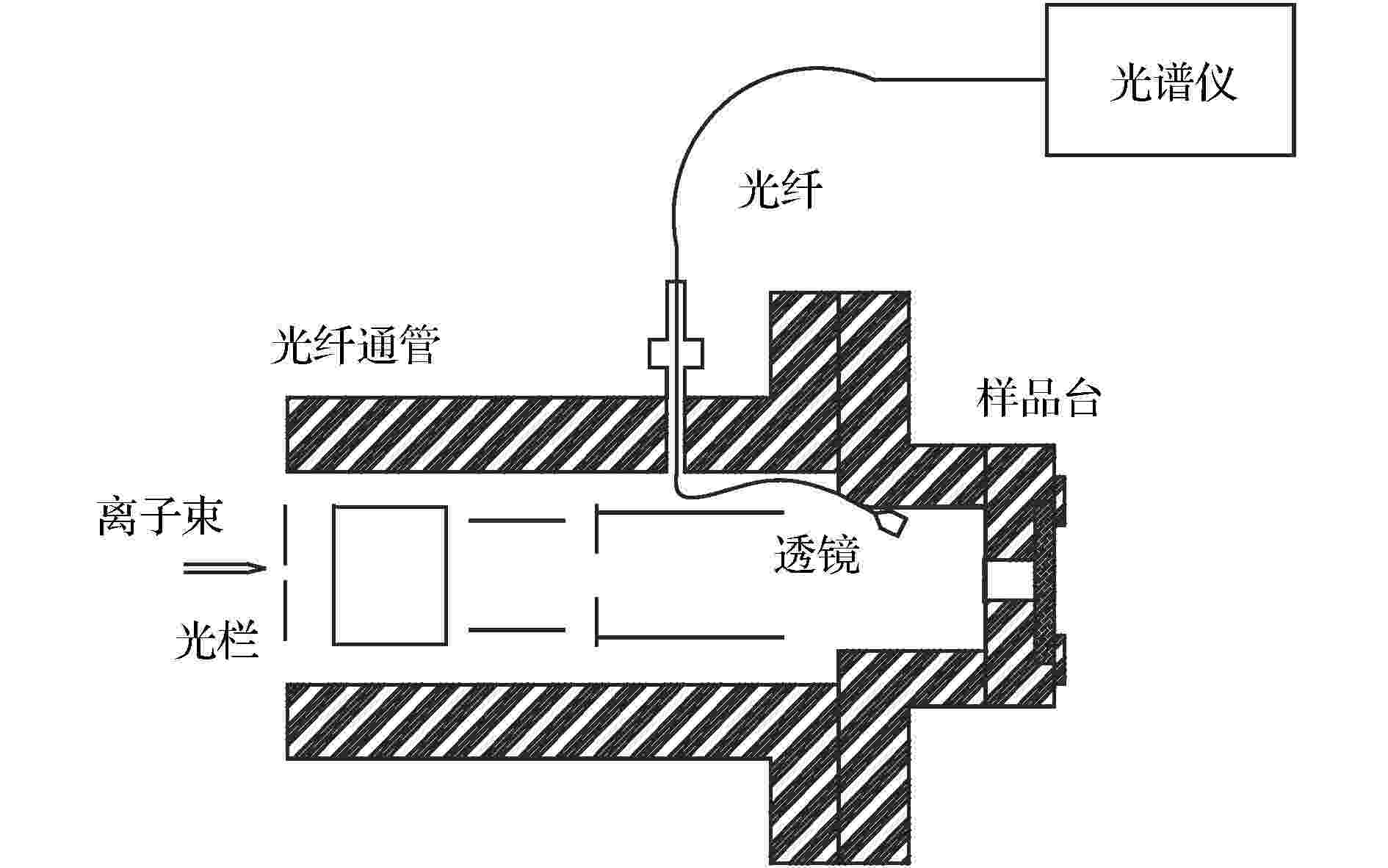
2020, 69 (10): 107801.
doi: 10.7498/aps.69.20200020
Abstract +
To contrast the generation and their evolution behaviors of irradiation damage in lithium fluoride under various ion, in situ luminescence measurements from lithium fluoride are carried out under 100 keV H+, He+ and O+ on the ion beam induced luminescence(IBIL) experimental setup on BNU400 ion implanter. Combined with Stopping and Range of Ions in Matter (SRIM) calculation of 100 keV H+, He+ and O+ stopping power in lithium fluoride, the emission intensity under He+ is the strongest,due to the higher excitation density of electron-hole pairs than them under H+ and the rising non-radiative recombination ratio under heavy ion O+. With the mass number increase of the incident ion, the nuclear stopping power would be increased, resulting in the faster rate of both formation and annihilation of point defects、the lower fluence for F-type centers reaching the highest intensity and the weaker luminescence intensity at the state of equilibrium. The irradiation resistance of $ \rm F_3^{-}/F_2^+ $ centers at 880 nm are better than the F2 centers at 670 nm, shown not only in the slower formation and annihilation rates of $ \rm F_3^{-}/F_2^+ $ centers but also the higher luminescence intensity of $ \rm F_3^{-}/F_2^+ $ centers under heavy ion O+.

2020, 69 (10): 108101.
doi: 10.7498/aps.69.20200021
Abstract +
Nitrogen-doped diamond like carbon film is promising in biological applications, studying the synergistic tribocorrosion performance is indispensable. In this paper, Nitrogen-doped diamond like carbon films were deposited on AISI 304L austenitic stainless steels and Si substrate by using the high power impulse magnetron sputtering technique using Ar and N2 as precursors at room temperature. The effect of target pulse duration on the structure, mechanical properties, corrosion resistance and tribocorrosion properties in Hank's equilibrium salt solution and the corresponding mechanism were studied. The results of scanning electron microscopy, atomic force microscopy, X-ray photoelectron spectroscopy and nano-hardness test showed that the nitrogen-doped diamond like carbon coatings prepared at a target pulse duration of 60 μs showed the sp3 bonding content of 33.9% with the hardness of 12.4 GPaand the root mean square roughness of 0.63 nm. With the increase in pulse duration to 90 μs, the sp2 bonding increased, meanwhile the surface roughness increased. The results of potentiodynamic polarization indicated that the Nitrogen-doped diamond like carbon coating prepared at 60μs had best corrosion resistance with the corrosion current density of 7.65 × 10–8 A·cm–2. The effect of the target pulse duration on tribocorrosionbehaviour of the Nitrogen-doped diamond like carboncoating was investigated in Hank’s solution by a reciprocating tribometer equipped with a three-electrode electrochemical cell.The coatings at 60 μs exhibited excellent tribocorrosion properties with high open circuit potential of 39 mV, low COF of 0.05 without pitting corrosion due to high corrosionresistance, low contact angel and dense microstructure.The results indicated that corrosion can be accelerated by friction, but it also affect the mechanical properties of the Nitrogen-doped diamond like carbon coatings. The increase in pulse duration to 90 μs, leading to the reduction of sp3 bonds which can form a cross-linking structure. The degraded cross-linking structure decreased the corrosion resistance of the coating via the increased porosity in the coating, which weakened the interfacial strength of the coating, and ultimately led to failure of the coatingunder the action of wear.
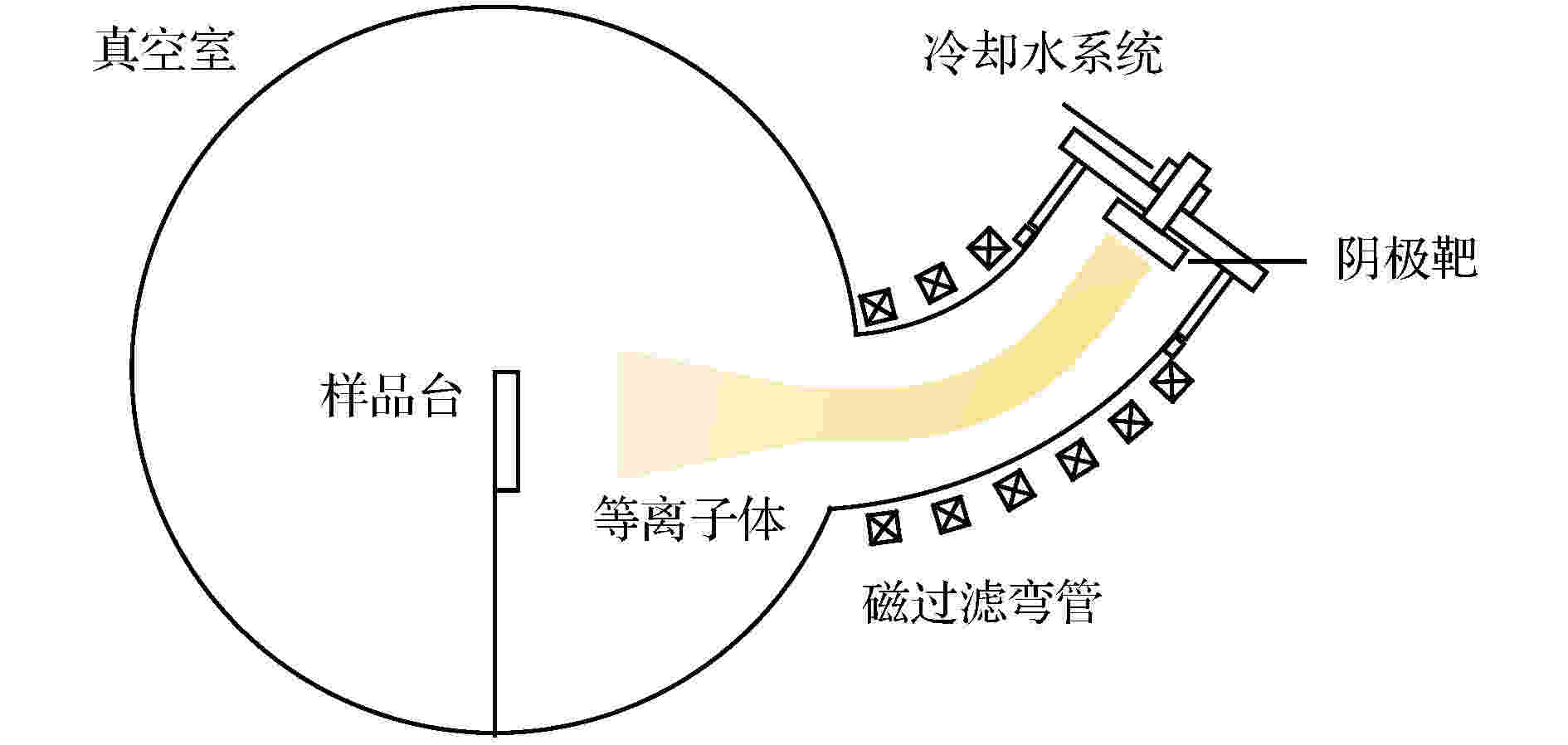
2020, 69 (10): 108103.
doi: 10.7498/aps.69.20200036
Abstract +
There are some high requirements for mechanical property to protective coatings of turbojet engine compressor blades as the appearance of extreme service conditions. The hard coating with high toughness, good adhesion, good wear resistance and excellent load carrying capacity is a potential coating for extreme service conditions in the future. Thick yet tough TiN hard coatings were successfully deposited on 304L stainless steel substrates by magnetic filtered cathodic vacuum arc technology. The morphology, structure and properties of the coatings were studied by SEM and XRD, etc.The results show that the continuous growth of TiN coatings attributed to periodic high energy ion bombardment which can suppress the large grain size and reduce the internal stress. The thickness of TiN coating can reach to 50 μm and the deposition rate was close to 0.2 μm/min. At the same time, the stable non stoichiometric TiN0.9 can be formed by controlling the constant N2 flow rate, which can improve the toughness of TiN coatings. All TiN ciatings belong to superhard coating and the max value of hardness and modulus of elasticity were 38.24 GPa and 386.53 GPa respectively. TiN coatings have good adhesion and excellent toughness.The highest $ H/E^{*} $ and $ H^3/E^{*2} $ rate of TiN coating can reach to 0.0989 and 0.3742. Thick yet tough TiN hard coatings have excellent wear resistance with the lowest friction coefficient of 0.26.
REVIEW

2020, 69 (10): 108702.
doi: 10.7498/aps.69.20200168
Abstract +
Due to the influence of the diffraction limit, the lateral spatial resolution and axial spatial resolution of traditional optical microscopes are limited to ~200 nm and ~500 nm, respectively. In the past two decades, with the rapid development of high-intensity lasers, high-sensitivity detectors and other optoelectronic devices, there have been reported many super-resolution imaging techniques that bypass the optical diffraction limit with different methods. Among these techniques, stimulated emission depletion microscopy (STED) technology has the advantages of high imaging resolution and fast imaging speed. This technology uses two lasers for imaging, one of which is used to excite fluorescence, and the other donut-shaped depletion laser is used to suppress the emission of fluorescent molecules around the fluorescent spot, in order to reduce the fluorescence point spread function and achieve super resolution Imaging. After recent years of development, the STED system has got great progress no matter from the generation, calibration and scanning of the beam, and the final imaging. In terms of laser source, new laser sources such as continuous wave beams, supercontinuum laser, stimulated Raman scattered laser, and higher-order Bessel beams have appeared; in scanning and calibration, new efficiency technology such as parallel scanning and automatic calibration have also appeared; In imaging, new methods such as time gating and phasor analysis have emerged to improve imaging quality. These new technologies and methods are of great significance to improve the efficiency of STED system construction and imaging. In addition, this paper also focuses on the ways to expand the imaging functions of the STED system. First, for three-dimensional STED imaging, this paper mainly introduces three methods to realize three-dimensional STED imaging by wavefront non-coherent adjustment, 4Pi and structured light illumination methods. Second, for multi-color imaging, this paper introduces several dual-color and multi-color imaging techniques for special dyes. Third, this paper introduces the combination of STED technology with fluorescence correlation spectroscopy technology, cell expansion technology, scanning ion-conductance microscope, photo-activated localization microscopy/stochastic optical reconstruction microscopy and other technologies. Finally, this paper systematically discusses the new research progress of STED technology in recent years, and discusses the future development trend of STED technology.
GENERAL
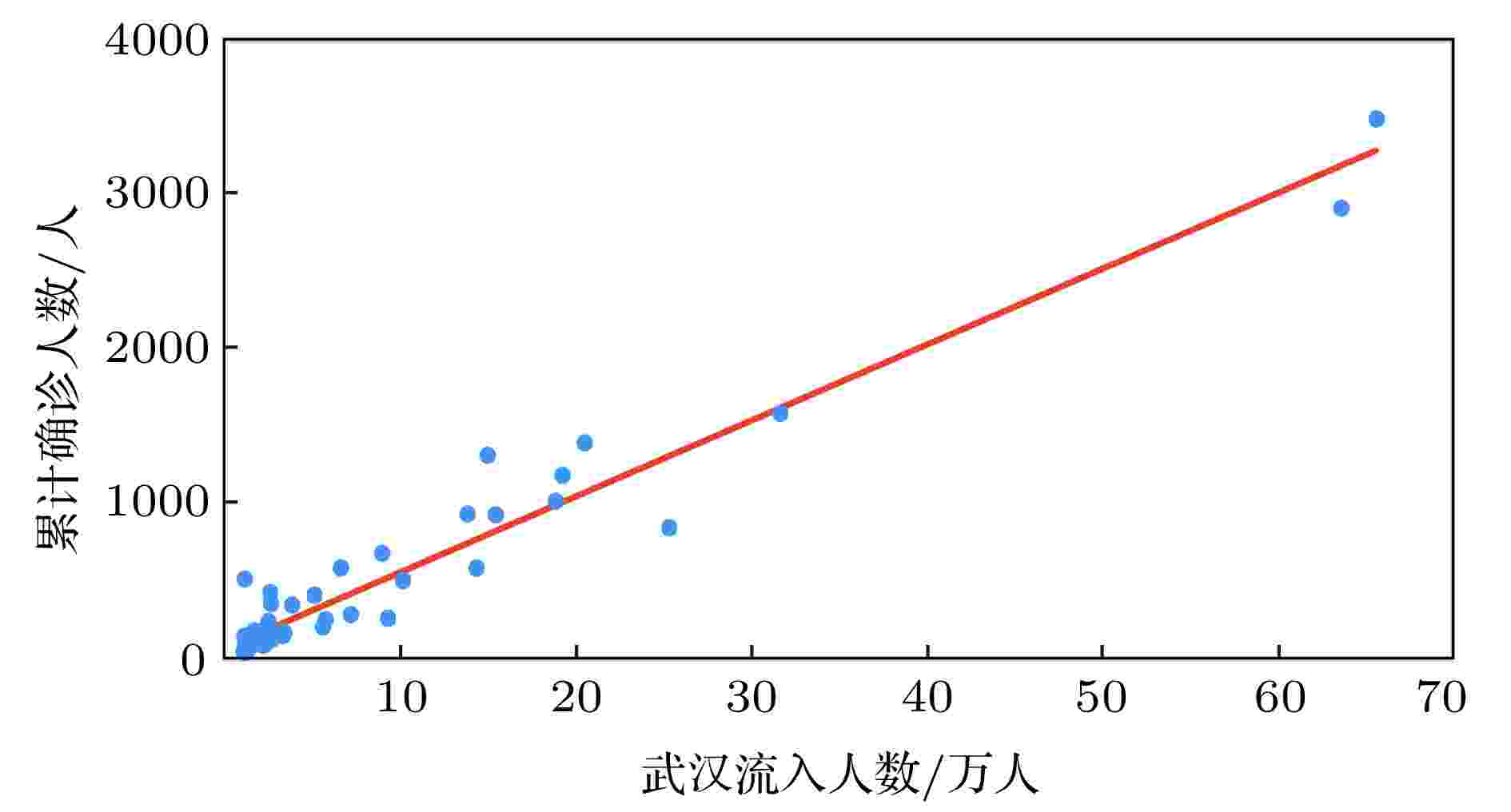
2020, 69 (10): 100201.
doi: 10.7498/aps.69.20200441
Abstract +
The cumulative number of local confirmed cases was highly correlated with the total inflow population from Wuhan before the city closure, and the proportion of third-generation infections in a local region is tiny. Accordingly, we proposed an approximate method to quantitatively evaluate the regional control efficacy of COVID that takes into account effects of both imported cases and regional population. We applied this method to evaluate the control efficacy of the top-50 cities with maximum inflow population from Wuhan. The 10 cities with the most significant control efficacy are Shijiazhuang, Luoyang, Enshi, Zhoukou, Xiamen, Guiyang, Xianning, Anqing, Xinyang, and Nanning.
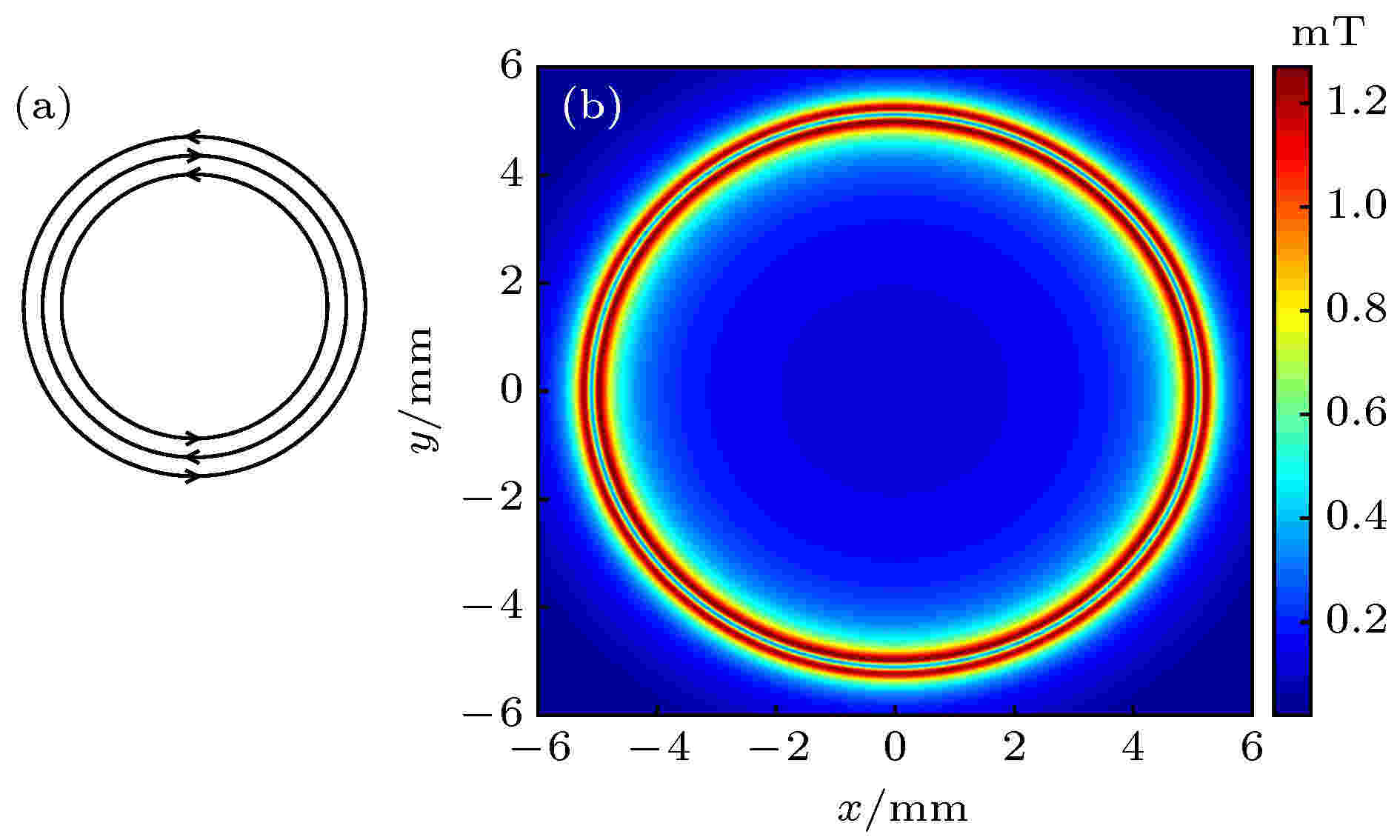
EDITOR'S SUGGESTION
2020, 69 (10): 100301.
doi: 10.7498/aps.69.20200284
Abstract +

2020, 69 (10): 100501.
doi: 10.7498/aps.69.20191944
Abstract +
The lymphatic system is an important defense function system in the human body. It is also critical to humoral homeostasis. Local dysfunction will cause edema, immune deficiency, and a high incidence. There are intraluminal valves in the lymphatic system, which allows the lymph fluid to flow to the large veins and heart. It has three major immune functions. First, it can resist bacterial viruses and protect the human body from disease attacks. Secondly, it is supplemented by lymphocytes to remove the products produced by metabolism. In the end, The damaged organs and tissues are repaired by lymphocytes to restore normal physiological functions. The lymphatic system does not have the same pump as the heart of the blood circulatory system. The driving of lymph is mainly done by the spontaneous contraction of the lymphatics (the lung lymphatic system is compressed by the alveoli). The autonomic contraction cycle of lymphatic vessels is caused by the increase of Ca2+ in lymphocytes, and the contraction drives the fluid to produce shearing force. The shearing force produces nitric oxide synthase (eNOS) in lymphatic endothelial cells, and eNOS increases NO and increases NO. Decreasing Ca2+ relaxes lymphatic vessels, fluid shear rate decreases after lymphatic vessel relaxation, eNOS decreases, NO decreases, Ca2+ increases, lymphocytes contract, and a new cycle begins. It can be seen that the concentration of NO and its distribution play a key role in the contraction of lymphatic vessels. Obviously, export pressure affects the shear rate of fluid in the lymphatics, which in turn affects the concentration of NO and the contraction of lymphatic vessels. To investigate the effect of lymphatic outlet pressure on lymphatic vessel contraction, we established a lattice Boltzmann model to simulate the initial lymphatic vessels embedded in porous tissue and the collecting lymphatic vessels with two pairs of valves. The valve is the main source of NO. Once contraction begins, the contraction is spontaneous, self-sustaining, and the system exhibits non-linear dynamics. This model can reproduce NO and The interaction of Ca2+ and the spontaneous contraction of lymphatic vessels, and the distribution of NO under different outlet pressures and their average values were studied.
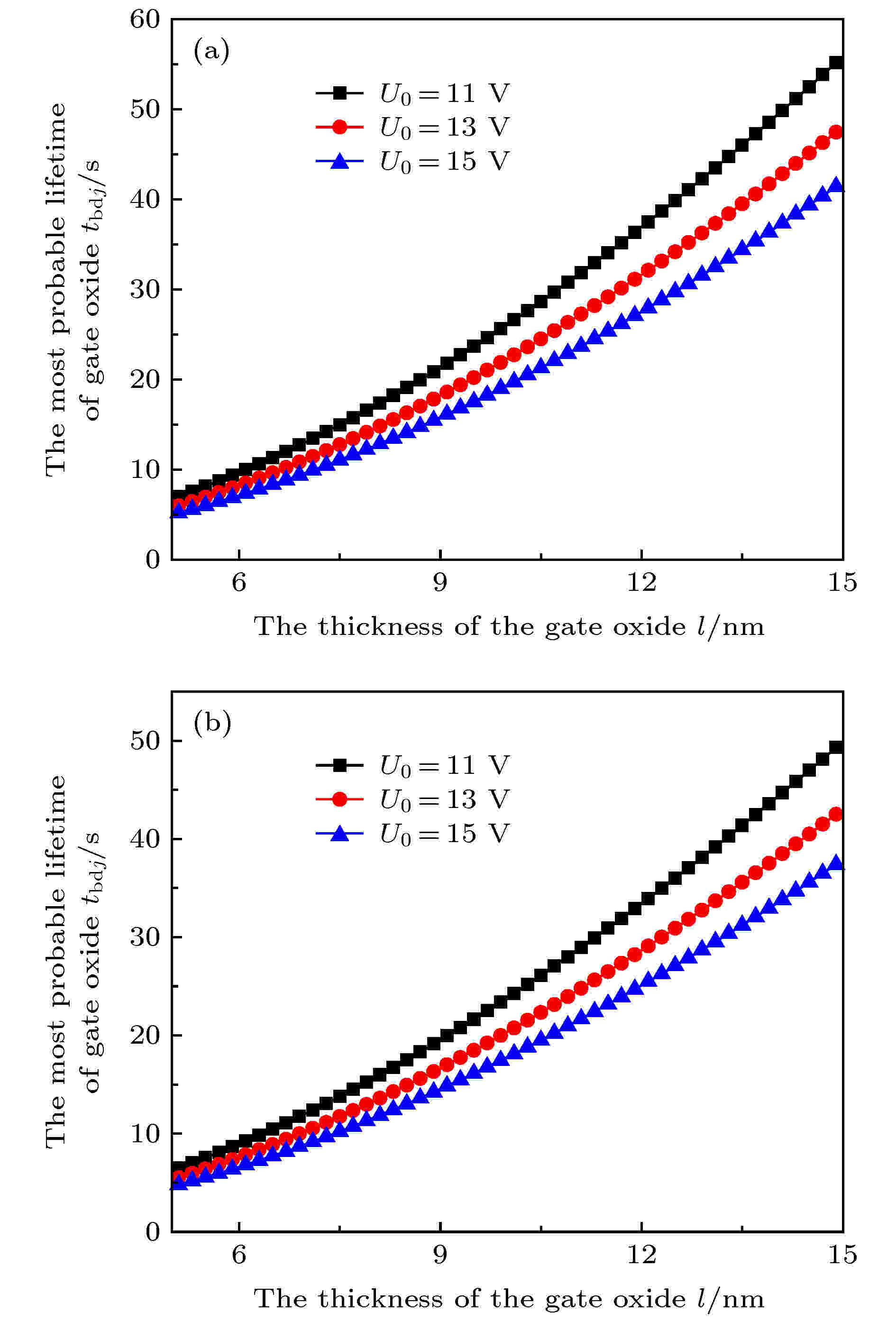
2020, 69 (10): 100502.
doi: 10.7498/aps.69.20200108
Abstract +
As one of the important factors affecting the reliability of Complementary metal oxide semiconductor integrated circuits, the time-dependent dielectric breakdown of gate oxide has always been the focus of domestic and foreign scientists. The previous researches have shown that when the electrons pass through the silicon dioxide lattice and collide with it, part of their kinetic energy will be dissipated, then among of which can create some sort of defects that behave as electron traps. However, when the electron traps density reaches a critical value in the gate oxide, the destructive thermal effects open a low-resistance ohmic path between the electrodes, thus, triggering the breakdown conducting mechanism. In this paper, in order to employing a statistical theoretical analysis method, the behavior related with time-dependent dielectric breakdown of gate oxide was investigated in detail. The following useful results are obtained, (i) According to the microscopic mechanism of the time-dependent dielectric breakdown of gate oxide under electrical stresses associated with the randomness and irreversibility of the electron traps generation in gate oxide, a theoretical analysis method has been proposed, which is based on the equation of the electron traps generation rate combined with the Langevin equation in random theory and the Fokker-Planck equation in the non-equilibrium statistical theory. (ii) In light of the dynamic equilibrium model, the generation rate equations of electron traps under constant current stress and constant voltage stress as well as the probability density distribution functions of electron traps density were determined. By integrating these distribution function, the cumulative failure rate was further obtained. (iii) Taking the specific metal oxide semiconductor capacitors as examples, the relationship between the most probable lifetime of the gate oxide and the constant current stress, constant voltage stress, as well as its thickness have been revealed. And the concept of "breakdown limit" was defined by analogy with the concept of "fatigue limit" in the phenomenon of solid fracture. (iv) The dependence of the cumulative failure rate on the current stress, voltage stress, and time has been presented. A characteristic value of the time was introduced to indicate the time when the cumulative failure rate reaches 0.63. At this time, most devices have breakdown failure. Besides, the test parameters are not affected by previous failures, and they are close to that of the cumulative failure rate of 1. The results show that the probability density distribution function of electron traps density satisfies lognormal distribution, and the obtained distribution of failures fits well with the experimental statistical data.
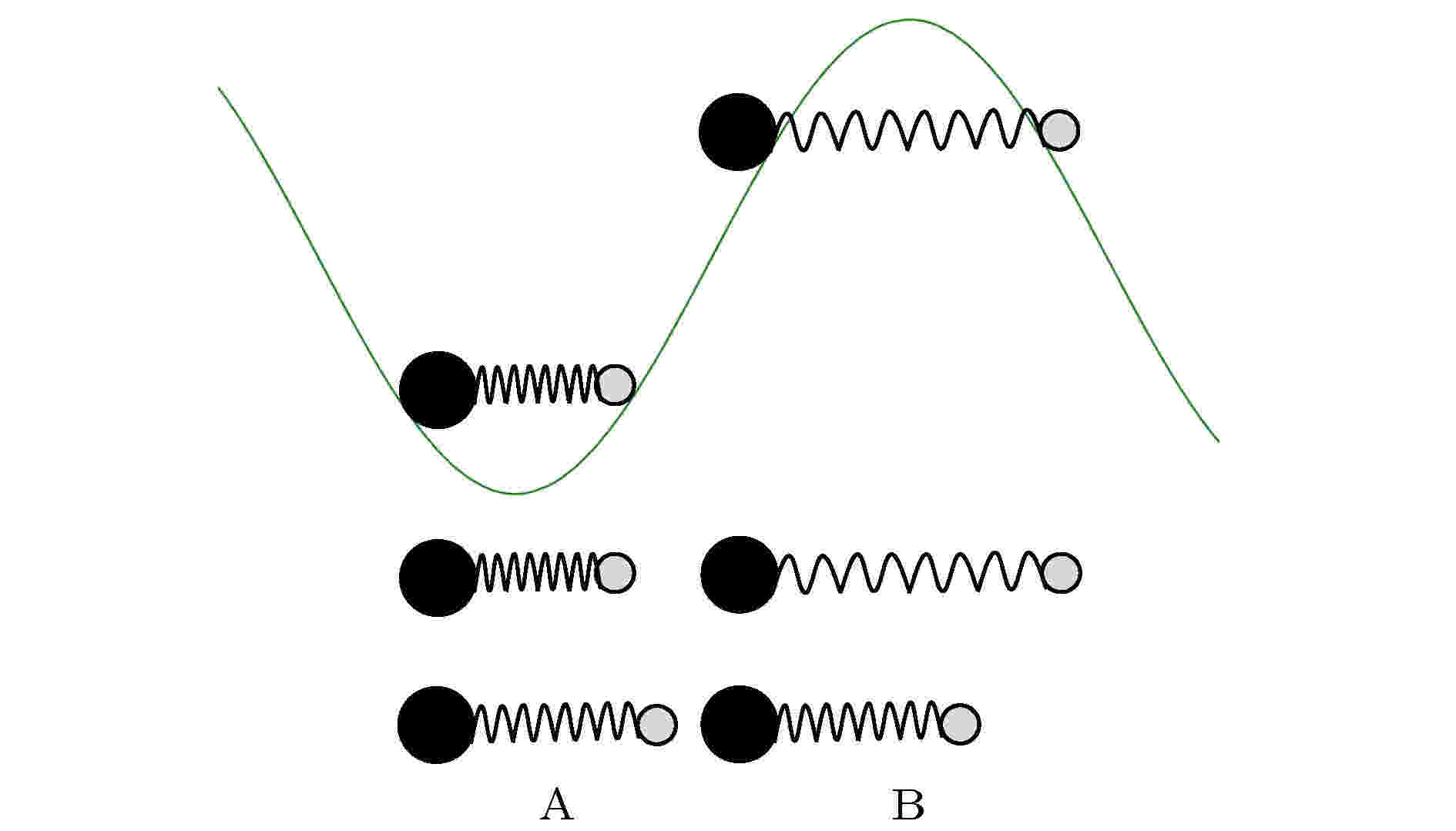
2020, 69 (10): 100503.
doi: 10.7498/aps.69.20191961
Abstract +
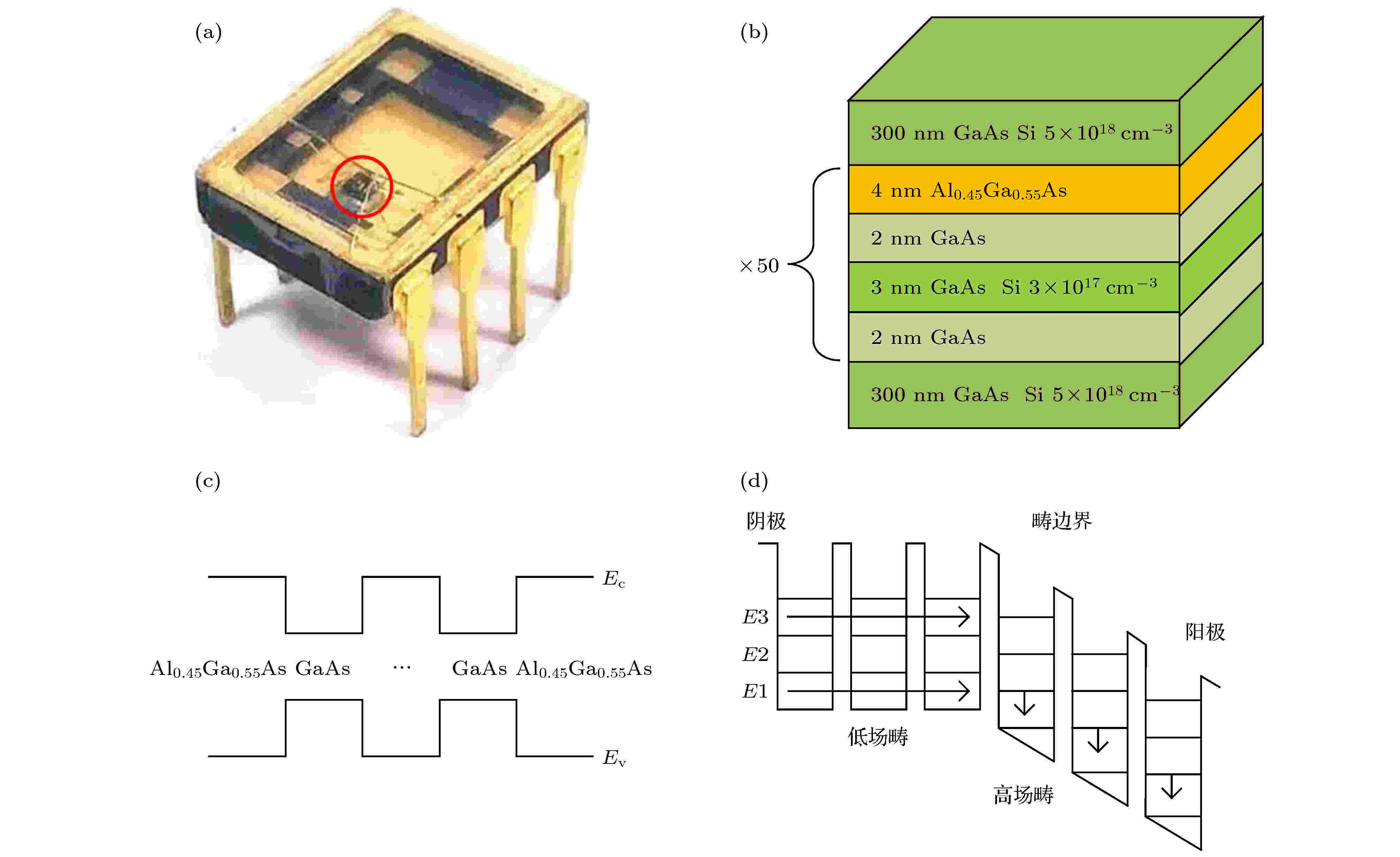
2020, 69 (10): 100504.
doi: 10.7498/aps.69.20200136
Abstract +

2020, 69 (10): 100701.
doi: 10.7498/aps.69.20191935
Abstract +
Photovoltaic power generation is affected by weather and geographical environment, showing fluctuations and random multi-interference, and its output power is easy to change with changes in external factors. Therefore, the prediction of output power is crucial to optimize the grid-connected operation of photovoltaic power generation and reduce the impact of uncertainty. This paper proposes a hybrid model of both convolutional neural network (CNN) and long short-term memory neural network (LSTM) based on genetic algorithm (GA) optimization (GA-CNN-LSTM). First, the CNN module is used to extract the spatial features of the data, and then the LSTM module is used to extract the temporal features and nearby hidden states. Optimizing the hyperparameter weights and bias values of the LSTM training network through GA. At the initial stage, the historical data is normalized, and all features were analyzed by grey relational degree. Important features are extracted to reduce the computational complexity of the data. Then, the GA-optimized CNN-LSTM hybrid neural network model (GA-CNN-LSTM) is applied for photovoltaic power prediction experiment. The GA-CNN-LSTM model was compared with the single neural network models such as CNN and LSTM, and the CNN-LSTM hybrid neural network model without GA optimization. Under the Mean Absolute Percentage Error index, the GA-CNN-LSTM algorithm proposed in this paper reduces the error by 1.537% compared with the ordinary single neural network model, and 0.873% compared with the unoptimized CNN-LSTM hybrid neural network algorithm model. From the perspective of training and test running time, the GA-CNN-LSTM model takes a little longer than the single neural network model, but the disadvantage is not obvious. To sum up, the performance of GA-CNN-LSTM model for photovoltaic power predicting is better.
NUCLEAR PHYSICS

COVER ARTICLE
2020, 69 (10): 102902.
doi: 10.7498/aps.69.20200282
Abstract +
X-ray scintillation screens as the core component of X-ray imaging detectors have widespread applications in the medical imaging, security inspection, high energy physics, radiochemistry, and so on. For a long time, the development of X-ray scintillation screen mainly focuses on improving the light yield in order to enhance its detection efficiency. However, a novel tendency has recently emerged for ultrafast time performance of the X-ray imaging detector. The indium doping zinc oxide (ZnO:In) with high radiation hardness, higher light yield(>10000 photons/MeV) and subnanosecond decay time is a promising scintillation material for ultrafast detections. In order to satisfy the requirements of X-ray scintillation screens with ultrafast and high-spatial-resolution in the existing and upcoming high energy physics experiments, the ZnO:In nanorod arrays have been prepared on a 100-nm-thick ZnO-seeded substrate by hydrothermal reaction method and then treated by hydrogen plasma in present work. The results of SEM demonstrate the average diameter and length of the ZnO:In nanorods are about 0.5 and 12 μm, respectively. The XRD shows the ZnO:In nanorods are highly aligned perpendicular to the substrate along c-axis direction. The X-ray excited luminescence spectra show that two luminescence bands are observed, i.e. an ultraviolet emission peak located at about 395 nm and a visible emission band at 450–750 nm. It is particularly important to point out that hydrogen plasma treatment can enhance the ultraviolet emission of ZnO:In nanorod arrays and suppress its visible emission. The reason is attributed to the formation of shallow donors through hydrogen entering the ZnO and the combination of VO and Oi. In addition, the fluorescence decay times of the ultraviolet and visible emissions for the ZnO:In nanorod arrays are subnanosecond and nanosecond, respectively, satisfying the demand of the fast X-ray imaging. The spatial resolution of ZnO:In nanorod arrays has been characterized in X-ray imaging beamline at the Shanghai Synchrotron Radiation Facility. Under excitation of the X-ray beam with the energy of 20 keV, a system spatial resolution of 1.5 μm could be achieved by using an 12 μm thickness ZnO:In nanorod arrays as the scintillation screen, which is exceeded the highest level had ever been reported on ZnO:In nanorod arrays scintillation screen. In conclusion, this present work shows that it is a feasible solution for X-ray detection and imaging with high temporal and spatial resolution by using ZnO:In nanorod arrays as the X-ray scintillation screen.
ATOMIC AND MOLECULAR PHYSICS

2020, 69 (10): 103101.
doi: 10.7498/aps.69.20200268
Abstract +
In this work, density functional theory method with the ωB97XD/def2-TZVP level is carried out to investigate the ground state structures, energy, electronic structures, aromaticity, infrared and Raman spectra of cyclo[18]carbon under different external electric field in the x, y and z direction of cyclo[18]carbon molecule. The excitation properties (the first 48 excited states containing excited energies, excited wavelengths and oscillator strengths) of cyclo[18]carbon are calculated by the time-dependent density functional theory method (TD-ωB97XD) with the def2-TZVP basis set under the same external electric field. The results show that cyclo[18]carbon can be elongated in the x or y direction under the electric field, and some C-C bond lengths can be elongated or shortened under the electric field. Meanwhile, the calculated results show that electric dipole moment is proved to be increasing with the increase of the external field intensity, but the total energy and LUMO-HOMO gap are proved to decrease with the increase of external field intensity. Moreover, addition of electric field can modify the electron delocalization and molecular aromaticity, such as external electric field in z direction can lower the electron delocalization and molecular aromaticity and external electric field in x or y direction can enhance the electron delocalization and molecular aromaticity. The addition of electric field can modify the infrared spectra, such as shift of vibrational frequencies and strengthening of infrared peaks. Furthermore, the calculated results indicate that the external electric field has significant effects on the excitation properties of cyclo[18]carbon. The increase of the electric field intensity can lead to the redshift of transition wavelengths (such as the first excited state). With the change of the electric field intensity, the stronger excited state (with the bigger oscillator strength) can become weak (with the small oscillator strength) or optically inactive (with the oscillator strength of zero). Meanwhile, the weak or optically inactive excited state can become stronger excited state by the external field. The ground state properties and excitation properties of cyclo[18]carbon can be modified by the external electric field. Our works can provide theoretical guidance for the application of cyclo[18]carbon in the nanotechnology such as molecular device.
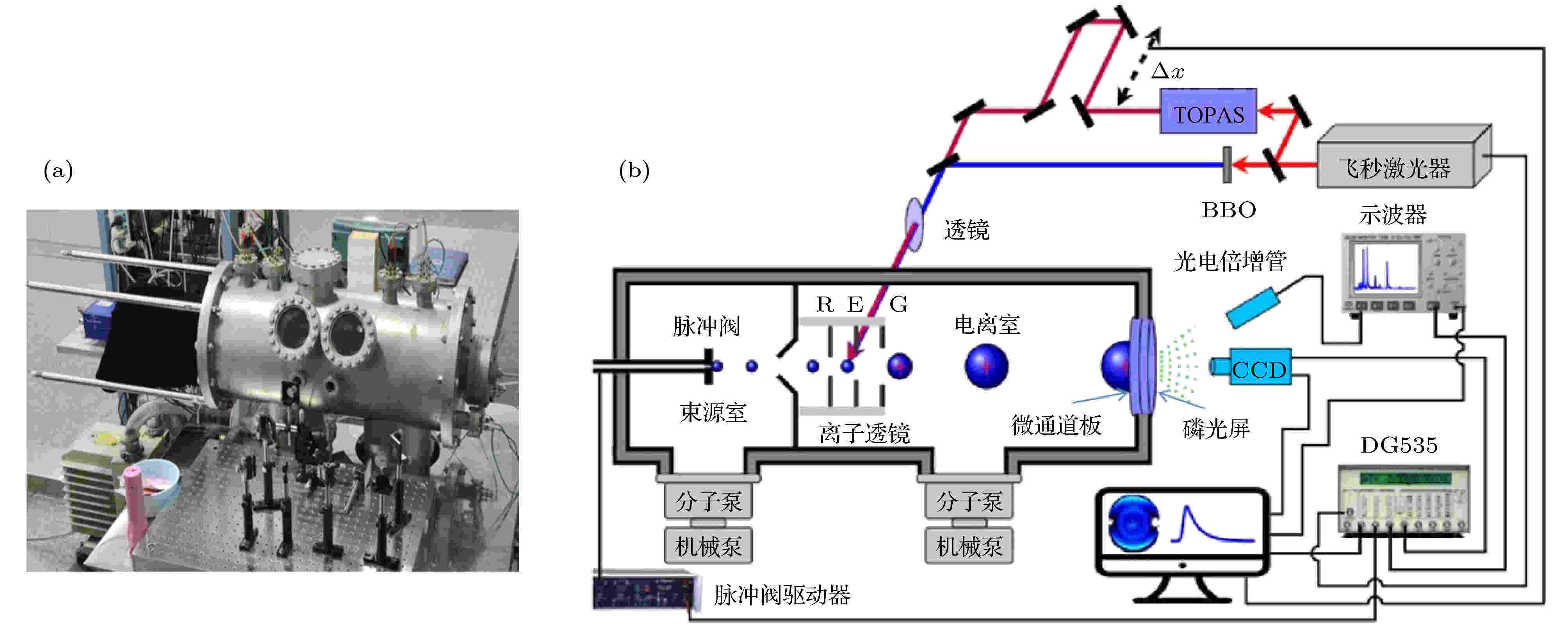
2020, 69 (10): 103301.
doi: 10.7498/aps.69.20200092
Abstract +
The ultrafast nonadibatic relaxation dynamics of the excited state of 2-methylpyrazine has been studied by using femtosecond time-resolved photoelectron imaging and femtosecond time-resolved mass spectrometry. The first excited state S1 of 2-methylpyrazine was excited by 323 nm pump light, and the excited state deactivation process is detected by 400 nm probe light. The lifetime of S1 state 98 ps is obtained by time-resolved mass spectroscopy. The intersystem crossing from the S1 state to the T1 state is observed on real time. The relaxation dynamics of S1 state of 2-methlypyrazine is different from that of pyrazine, the results show that the intersystem crossing process between S1 and T1 is the main relaxation channel of S1 state of 2-methlypyrazine, but the internal conversion process between S1 and S0 is also a main relaxation channel of S1 state. By using the advantages of femtosecond time-resolved photoelectron imaging, the photoelectron angular distribution at different pump-probe time delay was obtained experimentally. From the photoelectron angle distribution combined with photoelectron kinetic energy distributions, we tried to observe the field-free nonadiabatic alignment. However, due to the fact that the molecular symmetry of 2-methylpyrazine is lower than that of pyrazine, it is more challenging to observe the phenomenon of molecular nonadiabatic alignment with lower symmetry. Therefore, it is fail to observe nonadiabatic alignment feature of 2-methylpyrazine in this experiment. This work provides a clearer physical picture for S1 state nonadibatic relaxation dynamics of 2-methylpyrazine.
ELECTROMAGNETISM, OPTICS, ACOUSTICS, HEAT TRANSFER, CLASSICAL MECHANICS, AND FLUID DYNAMICS

2020, 69 (10): 104101.
doi: 10.7498/aps.69.20200165
Abstract +
In this paper, the X-ray diffraction experiment with multiple crystals configuration and its application in characterizing the emission characteristics of double crystal monochromator (DCM) on BL09 beamline of Shanghai Synchrotron Radiation Facility (SSRF) are reported. It is a non-dispersion configuration when the second crystal of DCM and the crystal analyzer form a (+n, –n) type experimental configuration. The rocking curve of the analyzer crystal can only reflect the operation of the DCM. It is the dispersion configurations when the second crystal of DCM and the crystal analyzer form the (+n, +n), (+n, –m) and (+n, +m) type experimental configuration. The width of the analyzer crystal rocking curve includes not only the intrinsic bandwidth of the DCM and the analyzer crystal, but also the angular divergence of the beamline. In this paper, we use the method of DuMond diagram to explicitly illustrate the characteristics of the output beam of the DCM which can be measured under the above two kinds of experimental configurations, and distinguish the diffraction characteristics of different experimental configurations at the same time. Finally, the angular bandwidth and the relative energy bandwidth of the DCM are 5.40(4) arcsec and1.30(1) × 10–4 @ 10 keV, respectively, which are obtained by deconvolution of the analyzer crystal in (+1, –1) nondispersive configuration. The angular distribution and the relative energy bandwidth of the synchrotron radiation beams are 26(1) arcsec and 6.3(2) × 10–4 @ 10 keV, respectively, which are obtained by deconvolution of the analyzer crystal and removal of dispersion broadening in (+1, +1), (+1, –3) and (+1, +3) dispersion configuration. After removing the influence of the DCM, the obtained angular divergence of the light source by 25(1) arcsec @ 10 keV, is consistent with the theoretical value of the bending source. In addition, under a series of different white beam entrance slit widths, we characterize the divergence and bandwidth of the beam emitted from the monochromator by the method of multi-crystals dispersion configuration and the DuMond diagram.

EDITOR'S SUGGESTION
2020, 69 (10): 104501.
doi: 10.7498/aps.69.20200217
Abstract +
In previous work [Acta Phys. Sin. 60 054501 (2011)], we found that for inclined Granular Orifice Flow (GOF) in air, regardless of the orifice size, the flow rate Q had a good linear relationship with the cosine of the inclination $\cos \theta $ , i.e. $\dfrac{Q}{{{Q_0}}} = 1 - \dfrac{{\cos \theta - 1}}{{\cos {\theta _{\rm c}} - 1}}$ , where Q0 is flow rate at $\theta ={0^ \circ }$ , and ${\theta _{\rm c}}$ is the critical angle of flow ceasing obtained by linear extrapolation. Moreover, ${\theta _{\rm c}}$ increased linearly with ratio between grain and orifice diameter d/D, and at the limit of d/D going to zero (that is, D going to infinity), the angle of repose of the sample ${\theta _{\rm r}}~( = 180^ \circ - \theta _{\rm c\infty})$ was obtained. Since the flow of GOF is very stable, we believe that the linear extrapolation of the above-mentioned inclined GOF provides a novel method for accurately measuring the angle of repose of granular materials. This method has been proved to be effective in a wider orifice size range by another work [Acta Phys. Sin. 65 084502 (2016)]; and three angles, namely the repose angle measured by GOF, the free accumulation angle of a sandpile and the internal friction angle of the granular material measured by Coulomb yielding, are confirmed to be consistent. In this work, we extend this method to underwater, measuring the mass flow rate of a granular sample (glass beads) which completely immersed in water and driven by gravity, discharged from an inclined orifice for various inclination angles and orifice diameters. It is found that similar to the case in air, regardless of the orifice size, the flow rate increase linearly with the cosine of the inclination; the critical angle of flow ceasing increases linearly with ratio between grain and orifice diameter; at the limit of infinite orifice, this critical angle is consistent with the repose angle of the underwater sample within the experimental error range. In addition, all measurements can be well fitted by using the Beverloo formula $Q = {C_0}\rho {g^{1/2}}{(D - kd)^{5/2}}$ , where the parameters C0 and k are only related to the cosine of the inclination, and are linear and inversely squared, respectively. Compared with the results of GOF in air reported by previous work, it is found that the difference mainly comes from the influence of buoyancy and fluid drag forces on the parameter C0. These results show that both the method of measuring angle of repose with the inclined GOF and the Beverloo formula have certain universality. The behavior of GOF is qualitatively the same whether the interstitial fluid is water or air.
CONDENSED MATTER: STRUCTURAL, MECHANICAL, AND THERMAL PROPERTIES

2020, 69 (10): 106801.
doi: 10.7498/aps.69.20200124
Abstract +
Friction-controlled graphene has great potential as a solid lubricant in micro/nano electromechanical systems. In this work, the conductive atomic force microscope was used to conduct oxidation etching on the graphene surface to produce different nanoscale patterns. The frictional properties of graphene nanoscale patterns were compared under different etching parameters, and the degree of oxidation of the etching patterns was analyzed by Scanning Kelvin Probe Microscopy. The results indicated that the degree of graphene oxidation can be controlled by changing the tip voltage, load and thickness so that graphene forms stable, adjustable oxidation point, line and nanometer patterns on the Au/SiO2/Si substrate. The diameter of oxidation point and width of oxidation line increased with the increase of voltage. The continuity and uniformity of nanometer patterns was improved by Increasing the thickness of graphene. The friction increased with the increase of tip voltage, which was attributed to the increase of meniscus force and electrostatic force. These nanostructures can precisely regulate nano-friction of graphene surface. The realization of the processing of nanoscale patterns and the adjustment of nano-friction characteristics provides a new idea and method for the study of electrical friction behavior of graphene in micro/nano electromechanical systems and the preparation of nano-devices with patterned surfaces.
CONDENSED MATTER: ELECTRONIC STRUCTURE, ELECTRICAL, MAGNETIC, AND OPTICAL PROPERTIES
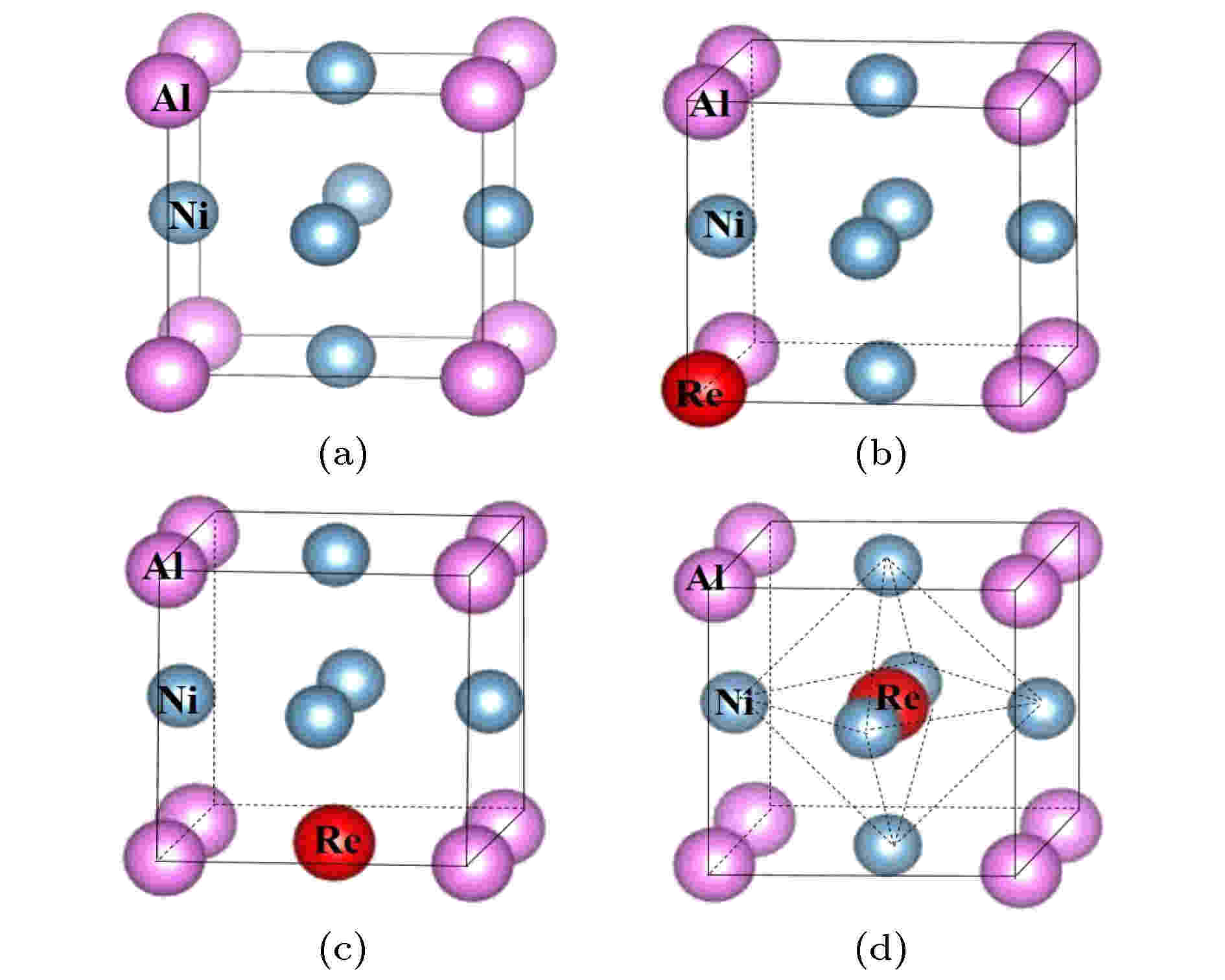
2020, 69 (10): 107101.
doi: 10.7498/aps.69.20200097
Abstract +
The effects of Re on the microstructure and mechanical properties of $ {\gamma '}$ phase Ni3Al intermetallics are investigated by using first-principles method based on density functional theory and generalized gradient approximation. It shows that in most stoichiometric ranges, the dissolution energy of Re replacing Al site is smaller than that of Re replacing Ni site. That means the energetically-favorable site of Re in Ni3Al is Al replace site. We further investigate the interaction between two Re atoms in Ni3Al. The larger the distance between two Re atoms, the more stable the system becomes, showing that Re atoms are dispersed in Ni3Al instead of being aggregated. Re doping causes a small increase in the lattice constant of Ni3Al intermetallics without causing serious lattice deformation. Analyses on differential charge density and state density show that Re atom bonds with neighboring atoms, especially with Ni atoms, and reduces the surrounding Ni—Al bond energy. Analyses on local state density show that Re atom has orbital interaction with the neighboring Ni and Al atoms, and the interaction with Ni is larger, which concerns the 5d orbit of Re and the 3d orbit of Ni. The effect of Re on the mechanical properties of Ni3Al intermetallics is also investigated. The elastic constants calculating results together with empirical criteria indicate the presence of Re atom (corresponding concentration is 0.93%) can cause increase of the stiffness and hardness of Ni3Al. The Cauchy pressure value shows a slight improvement in toughness. The increase of Re doping concentration (the concentration of Re in Ni3Al is 1.85%) can cause increase of the lattice constant, stiffness and hardness and decrease of the ductility of Ni3Al. In order to correct the temperature of the results obtained by first-principles method, the influence of temperature on the mechanical properties of Ni3Al has been further investigated through Phonopy calculation. The influence of temperature on the coefficient of thermal expansion and bulk modulus of elasticity is obtained by quasi harmonic approximation. The results show that the addition of Re slightly enhances the entropy of Ni3Al, but causes decrease of its Helmholtz free energy on a small extent. At high temperature, doping of Re greatly strengthens the bulk modulus of Ni3Al but decreases the thermal expansion coefficient of which. Results of the current research can provide theoretical data for improving the mechanical properties of single crystal turbine blades of aero-engines.

2020, 69 (10): 107201.
doi: 10.7498/aps.69.20200237
Abstract +
Based on the Floquet theory and transfer-matrix method, We investigated the influence of light-field on the spin-polarized transport properties for electrons tunneling through two kinds of magnetic-electric barrier structures (the $\delta$ -doped magnetic-barrier can be realized in experiments by depositing two ferromagnetic stripes on top and bottom of a semiconductor heterostructure and the light-field can be realized by placing a hemispherical silicon lens on the back surface of the semiconductor substrate). Transport properties result from the interaction of electrons with the light-field by means of photon absorption and emission. It is found that the light-field can greatly affect the transmission probabilities as well as the corresponding polarizations. The distance between the adjacent peaks and the number of the transport peaks can be controlled by adjusting the frequency and the amplitude of the light-field, respectively. It is shown that a significant spin-polarization effect can be induced by such light-field in the kind of antisymmetric magnetic barrier structure ($B_{1}=-B_{2}$ ) and the light-field can greatly change the spin-polarization effect in the kind of symmetric magnetic barrier structure ($B_{1}=B_{2}$ ). When the frequency of the light-field increases, the spin-polarization shifts toward the low-energy end and gradually increases. These remarkable properties of spin polarization may be beneficial for the devising tunable spin filtering devices.
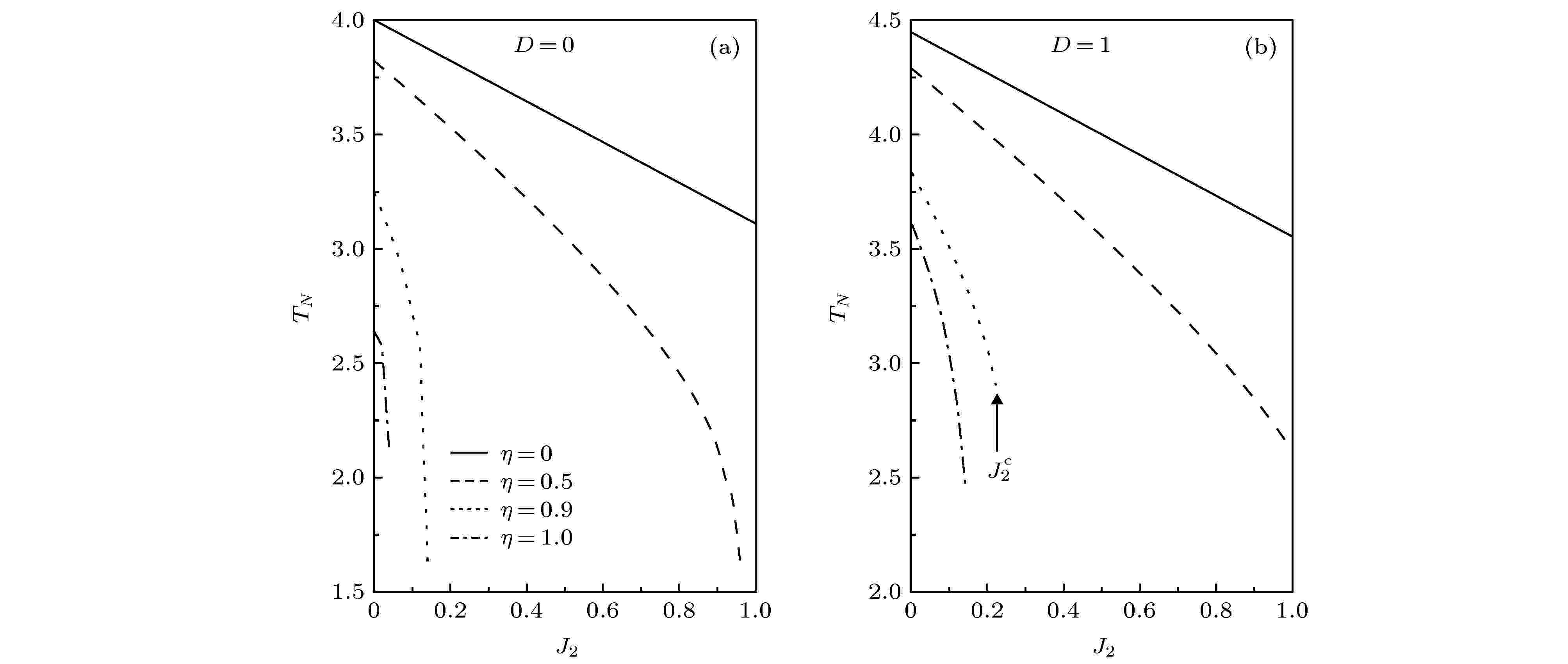
2020, 69 (10): 107501.
doi: 10.7498/aps.69.20200077
Abstract +
The existence of biquadratic exchange had been well established by Anderson, Huang and Allen. Early investigations indicated that the biquadratic exchange term in spin Hamiltonian was found to have significant effects on the magnetic properties of compounds containing iron-group ions or rare-earth metal ions. Recently, studying the anisotropic magnetic excitation of iron-based superconducting materials indicated that the experimental phenomenon cannot be explained well only by a simple collinear Heisenberg antiferromagnetic model. However, if the nearest neighbor biquadratic spin coupling is introduced, the experiment can be well explained. Similar results had also been obtained in the investigation of the superconducting material FeSe. As a result, exploring the effect of biquadratic exchange interactions on the magnetic properties of magnetic systems is significance. In this paper, we use the double-time Green's function method to study the properties of the spin-1 Heisenberg antiferromagnets with biquadratic exchange interactions and anisotropy on a three-dimensional lattice. We derive the equation of motion of the Green's function by a standard procedure. In the course of this, the higher order Green functions have to be decoupled. For the higher order Green functions of different lattice points, a Tyablikov or random phase approximation decoupling are used to decuple. For the higher order Green functions of the same lattice points, we adopt the Anderson-Callen decoupling to decouple. Based on the above procedures, the analytic expressions of the magnetization and critical temperature are obtained. The effects of biquadratic exchange interactions and anisotropy on the critical temperature are discussed in detailed. Our results show that the critical temperature increases with the increase of the anisotropy for a given biquadratic interaction. Regardless of the value of the anisotropy, the critical temperature always decreases with the increase of the biquadratic interaction. As the value of anisotropic parameter $\eta = 0$ , there is an obvious linear relationship between the critical temperature and the biquadratic interaction. However, when the anisotropy of the system becomes weaker, there is no such linear relationship between them. By comparing similar ferromagnetic models, it is found that the results of this paper are significantly different from those of the ferromagnetic model. When the biquadratic interaction is equal to 0, our results agree with other theoretical results.
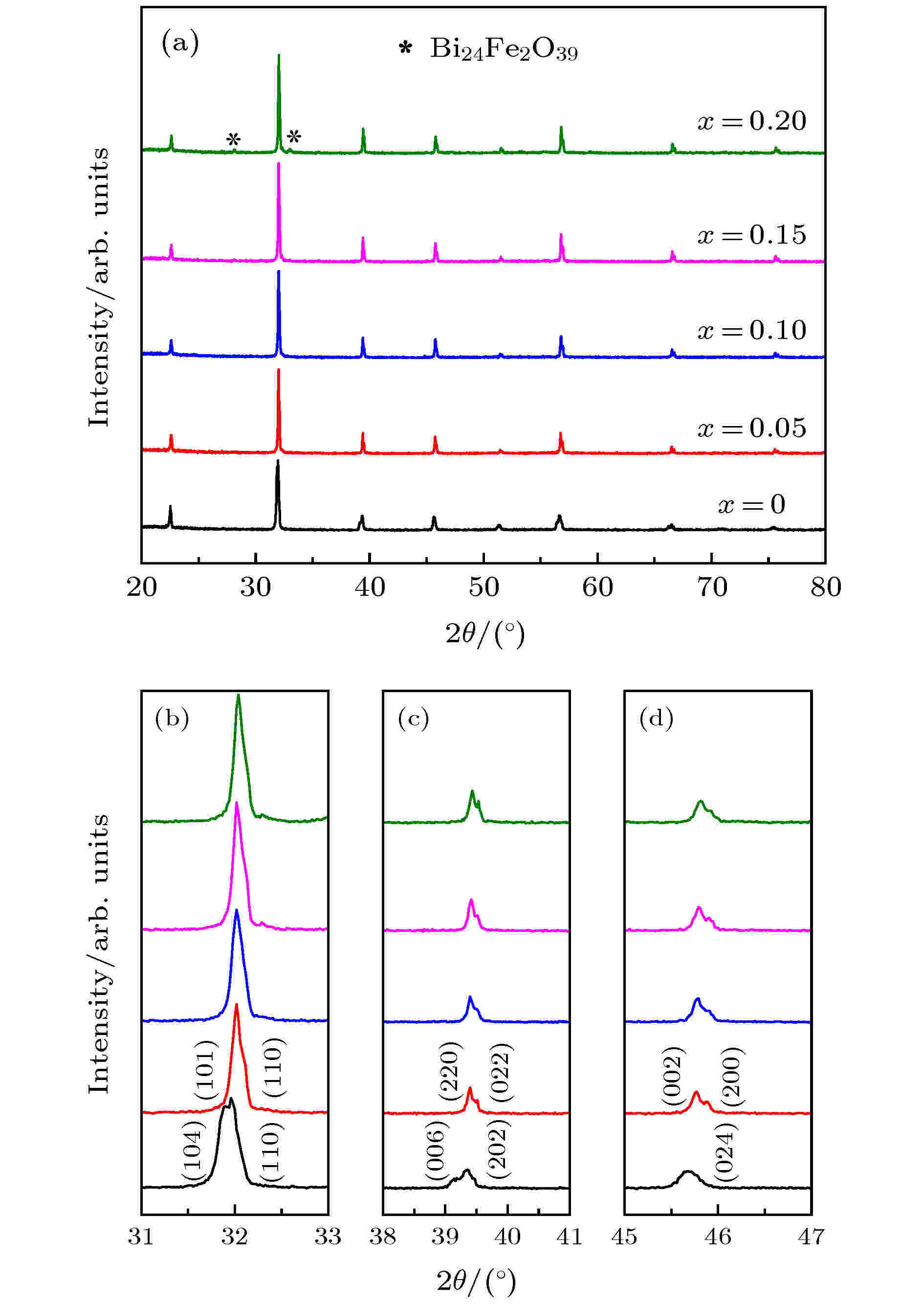
2020, 69 (10): 107701.
doi: 10.7498/aps.69.20200175
Abstract +
The 0.7Bi1–xGdxFe0.95Ga0.05O3-0.3BaTiO3 (BGxFG-BT, x = 0, 0.05, 0.1, 0.15, 0.2) ceramics were successfully synthesized via the conventional solid-state reaction method. The effects of Gd doping on crystal structure, microstructure, dielectric, ferroelectric and magnetic properties were systematically investigated. X-ray diffraction analysis indicates that Gd doping induce a structural transition from rhombohedral (R3c) to pseudo-cubic (P4mm) in BGxFG-BT ceramics. Scanning electron microscopy results show a decrease of grain size with doping Gd in BFG-BT. The average grain sizes of the ceramics range from 3.2 μm to 6.2 μm. The dielectric constant and loss tangent are drastically increased and reduced respectively with introducing Gd into the ceramics. Temperature dependent dielectric constant presents a broad peak in the vicinity of Néel temperature (TN) for all the samples, signifying strong magnetoelectric coupling. An increment in TN is also observed as a result of Gd-doping in the temperature regions of 230 to 340 ℃. The leakage current density is reduced by about two orders of magnitude under the electric field of 20 kV/cm. This can be ascribed to the reduction of the oxygen vacancy concentration, which is confirmed by the X-ray photoelectron spectroscopy result. The ferroelectricity and ferromagnetism are also improved after the addition of Gd seen from the polarization hysteresis (P-E ) loops and the magnetization hysteresis (M-H) loops. The greatly enhanced magnetism with Mr = 0.0186 emu/g and Ms = 1.084 emu/g is obtained in the ceramic with x = 0.2, almost three point six times larger than that of the undoped ceramic.
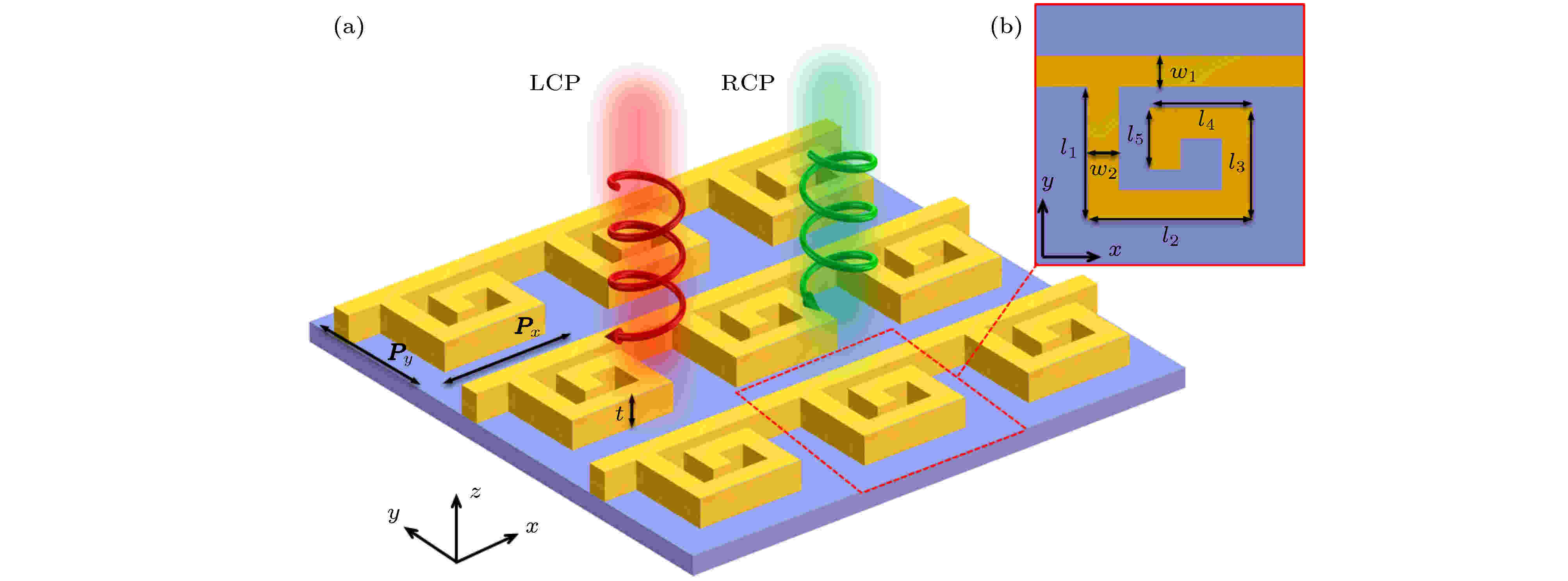
2020, 69 (10): 107802.
doi: 10.7498/aps.69.20200130
Abstract +
Circular dichroism effects have been widely used in circular polarizers, optical modulators and optoelectronic devices. Periodically arranged artificial metal chiral nanostructures has a strong electromagnetic coupling effect with light, which can greatly increase the interaction between the light and matter. Three-dimensional helix and helix-like chiral nanostructures show a larger circular dichroism effect due to the strong interactions between electric and magnetic resonance. The double-layer structures also can produce large circular dichroism, which signals also results from electric dipoles with different orientations between the two layers. Although the three dimensional plasmonic structures have shown large circular dichroism signals, however, three dimensional devices hold disadvantages in wide practical applications because of their complicated fabricating process, especially at micro- and nanoscales. Recent years, circular dichroism signals of planar nanostructures have been studied owing to their easy fabrication and wide potential applications. The resonance mode of planar metal nanostructures is sensitive to the shape, geometry, materials and surrounding environment of nanostructures, which provides a feasible technical approach for adjusting the circular dichroism signal of planar metal nanostructures. In this article, larger circular dichroism signals are realized through planar composite golden nanostructures, which composed of infinite long nanowire and G-shaped nanostructure. The absorption spectra, surface charge distributions at resonance wavelength of planar composite golden nanostructure are calculated by finite element method. For comparison, a circular dichroism signal with only G-shaped nanostructures is also studied. The numerical results show that under the illumination of right-handed polarized and left-handed polarized light, the planar composite golden nanostructure and G-shaped nanostructure exhibit electric dipole, quadrupolar, octupolar resonance modes, respectively. When the G-shaped nanostructure is connected to an infinitely long nanowire, all resonance peaks have a red shift and infinitely long nanowire increases the local surface resonance intensity under different circularly polarized light excitation. Therefore, it significantly enhances the circular dichroism signal of the planar composite golden nanostructure. At the same time, the influence of geometric parameters such as the different length of each nanorod of the G-shaped nanostructure and the thickness of the infinitely length nanowire on the circular dichroism modes are also studied. The findings may provide some guideline and methods for improving the circular dichroism signal of planar chiral nanostructure.
INTERDISCIPLINARY PHYSICS AND RELATED AREAS OF SCIENCE AND TECHNOLOGY

2020, 69 (10): 108102.
doi: 10.7498/aps.69.20200158
Abstract +
Gallium oxide (Ga2O3) nanomaterials have great potential in the fields of ultraviolet transparent electrodes, high-temperature gas sensors, solar blind ultraviolet detectors and power devices, while achieving Ga2O3 nanomaterials with high crystalline quality and controllable size and morphology still remains challenge. Herein, size-controllable Gallium oxide hydroxide (GaOOH) nanorods, nanorod bundles, and spindles were prepared by hydrothermal method. After high temperature calcination, GaOOH nanomaterials were successfully transformed into higher-quality single-crystal β-Ga2O3 nanomaterials which well retained the morphological characteristics of the pristine GaOOH.With the help of X-ray diffraction (XRD), Raman scattering spectroscopy (Raman) and field emission scanning electron microscope (FE-SEM), we systematically studied the influence of the pH value and the concentration of anionic surfactants in the precursor solution on the crystal structure and surface morphology of GaOOH and β-Ga2O3 nanomaterials, and explored the different growth mechanism of GaOOH nanomaterials under different conditions. Simultaneously, room temperature photoluminescence (PL) tests revealed that β-Ga2O3 nanomaterials with different morphologies exhibit typical broad blue-green emission and sharp red emission, which are closely related to the existence of intrinsic defects in nanomaterials.The above research results provide valuable information for the controllable preparation of high-quality β-Ga2O3 nanomaterials.
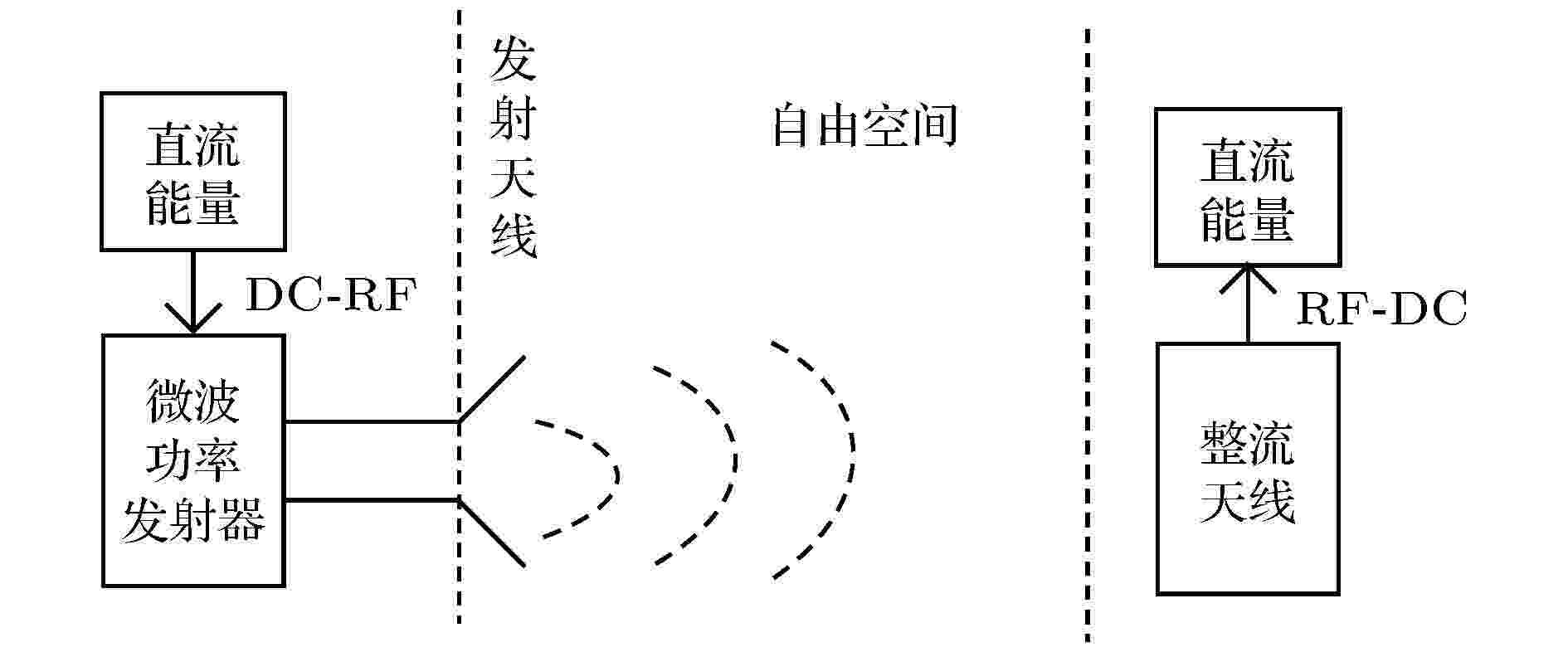
2020, 69 (10): 108401.
doi: 10.7498/aps.69.20191415
Abstract +
Microwave wireless power transfer(MWPT) can break through the restriction of transmission line to transmit electrical energy, which is conducive to dealing with power supply in complex scenarios, and has a very large application prospect. Energy conversion efficiency is an important parameter of MWPT. Hence, researchers are focus on improving the conversion efficiency of MWPT from different ways. Schottky diode is the core component of the rectifier circuit, which determines the limit of the energy conversion efficiency. However, the research involving the design of Schottky diode has rarely reported. In this paper, a GeOI folded space charge region Schottky diode is proposed. The space charge region of the proposed Schottky diode is composed of two parts: the vertical space charge region and the horizontal space charge region. So the capacitor is also divided into two parts, namely the vertical capacitor and the lateral capacitor. In the device model, these two capacitors are in series. So the total capacitance will be reduced. This article establishes its capacitance model and completes the optimization of device material parameters and structure parameters. The designed device parameters are as follows: the doping concentration of the heavily doped buffer layer on the left side of the Ge material is 2 × 1020 cm–3 to form Ohm contact, the doping concentration of the lightly doped region on the right side is 3.8 × 1017 cm–3, the thickness of the folded region is 0.2 μm, the Schottky metal is Wu, the width of metal is 8 μm, and the length of metal is 2 μm. We use the proposed Schottky diode as the core rectifier to simulate the rectifier circuit by using ADS, in which the SPICE parameters of the proposed Schottky diode was extract using Cadence Model Editor. When the input energy is 24.5 dBm, the energy conversion efficiency reached 75.4%. Compared with the conventional schottky diode, the energy conversion efficiency is significantly improved. The study of the proposed Schottky diodes can provide valuable reference for improving the energy conversion efficiency of microwave wireless energy transmission.
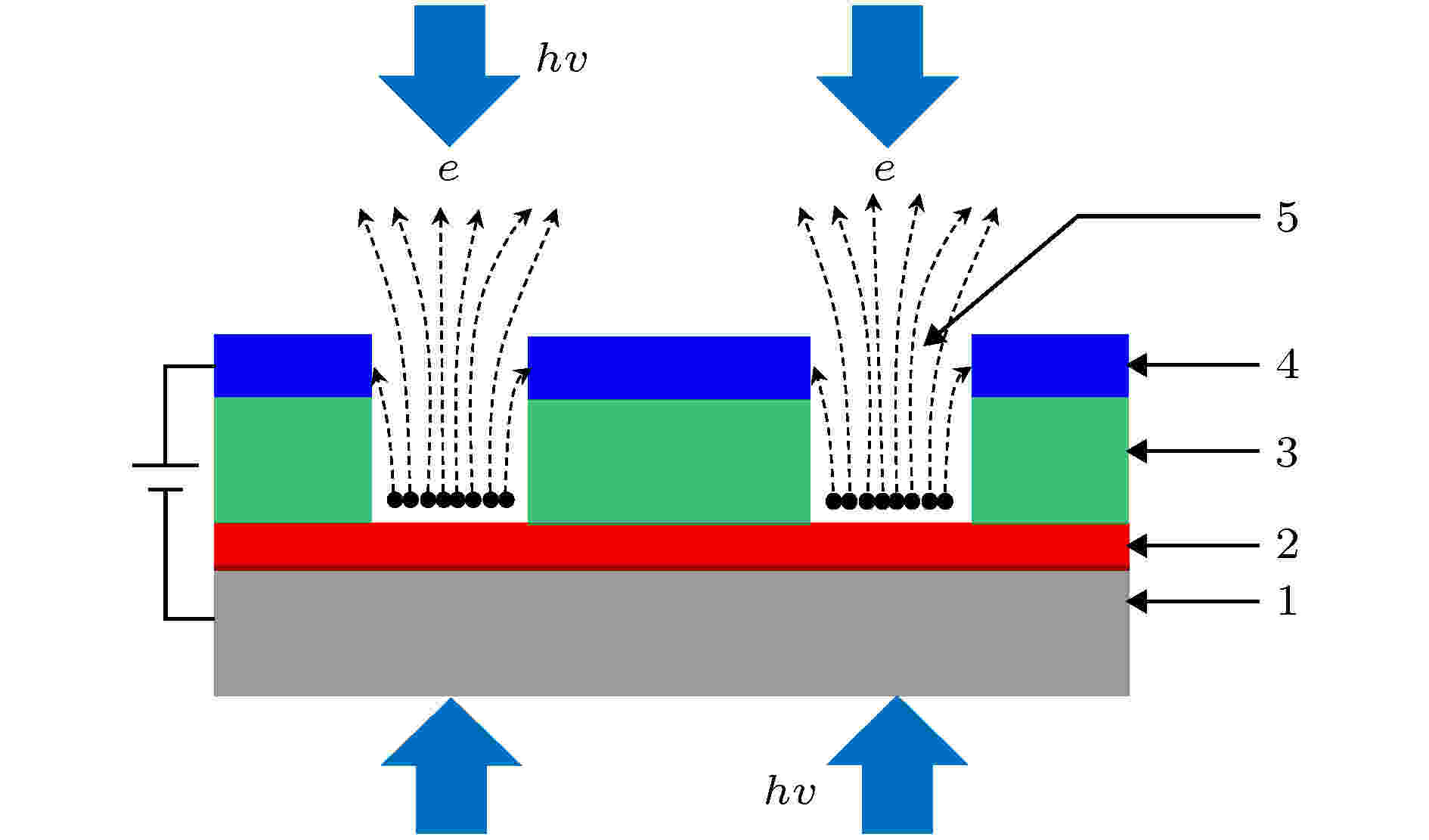
EDITOR'S SUGGESTION
2020, 69 (10): 108501.
doi: 10.7498/aps.69.20191893
Abstract +
The photocathode was an ideal electronic source with fast response, centralized distribution of electronic capabilities, and many other advantages. But for its low emission current density and short lifetime at ion bombardment environment, it will not be used in power devices and large scientific devices. Although the emission current of the photocathode can be increased with the aid of electric filed, it was not reach the milliamperelevel. In the field emission cathode, the strong electric field can effectively reduce the surface barrier of the emitter, so that the cathode produces electron emission. Based on the photoelectric conversion mechanism of photocathode and the electron emission theory of field emission cathode, a vacuum channel structure photocathode module is designed. The cathode modules with GaAs substrate were fabricated by the peritoneal and etching process. The parameters of vacuum channel were 3 μm × 700 μm, and its array structure was 1 × 100. The deep of the vacuum channels were 400 nm. It can be seen from the test result, the emission current of the photocathode was 26.12 mA with the laser beam power 5 W, and its emission current density was 5.33 A/cm2. During cathode operation, the laser beam and emission will cause the temperature of the photocathode material to rise, and this could icreasing the conductivity of the GaAs, the efficiency of electron supplement from negative electrode to electron emission area of the GaAs will also be improving. Its emission current could reach 89.69 mA at 400 ℃. Because there is no active atom on the photocathode surface, its lifetime was longer than the traditional photocathode that astivated by Cs/O. The life test of the photocathode modules was carried out, its emission current was 4.5 mA ± 0.3 mA within the 144 h, and its performance was not attenuate significantly. The vacuum channel was the main area of the photocatode electron emission, and the shape of electron beam can be easily obtained by adjusting the structure of the vacuum channel parameters. This advantage can improve the applicability of high current density photocathode in vacuum electronic devices and equipment.
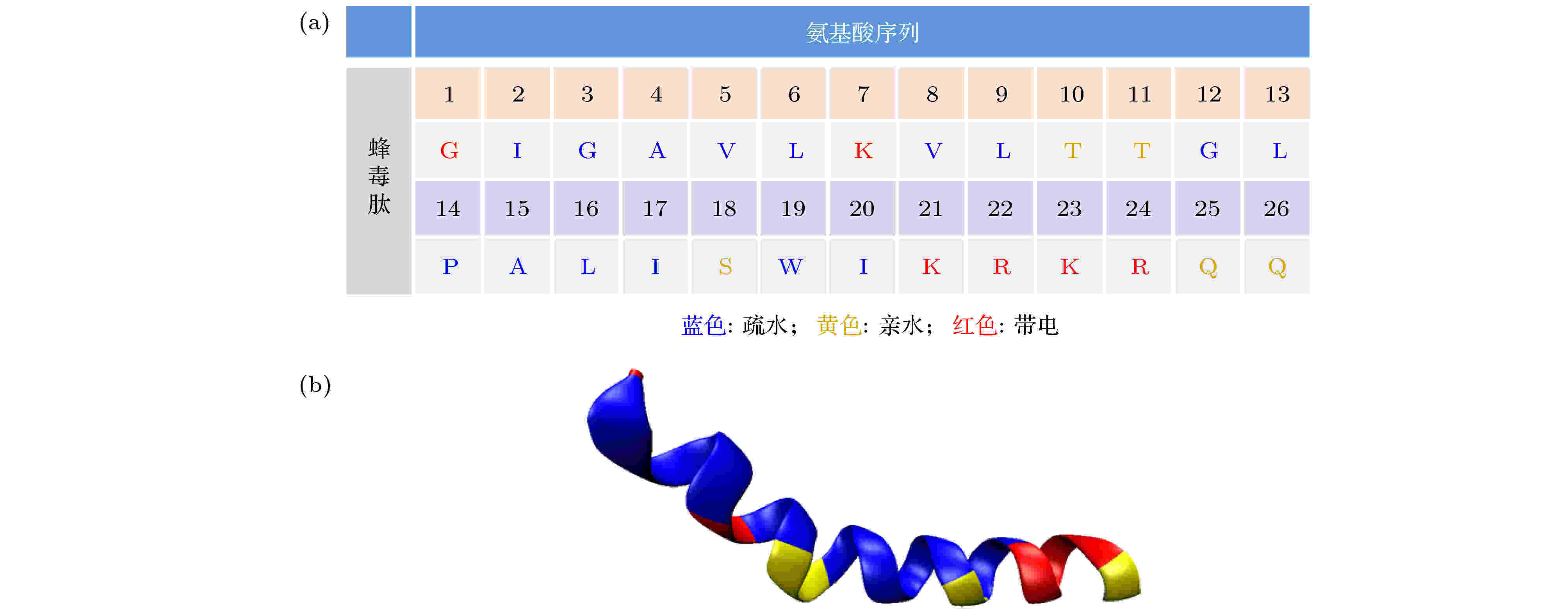
Single molecular kinetics during the interactions between melittin and a bi-component lipid membrane
2020, 69 (10): 108701.
doi: 10.7498/aps.69.20200166
Abstract +
Due to the unique bacterial killing ability through membrane permeabilization and content leakage, antimicrobial peptides (AMPs) have been regarded as promising candidates against the severe threats of drug-resistant bacteria and even superbugs to public health. However, investigations of the mechanism underlying their membrane permeabilization like poration are still on the way. Here, from the perspective of molecular motion kinetics, we studied the interactions between melittin, as one of the most representative AMPs, and a bi-component lipid membrane based on the combination of single-molecule tracking and molecular dynamics simulations. Our results reveal that, the mobility of some lipids in membrane, in comparison of the other most molecules, is significantly decreased by the surface adsorption and transmembrane insertion of melittin. Moreover, melittin tends to work at the boundary region between phase domains, disturb and blur the phase separation behavior and consequently lower the confinement of phase boundary on lipid motions. This work demonstrates the correlation between membrane activity of melittin and the motion kinetics of lipids as well as phase behavior of the membrane. These results would be helpful not only for understanding the molecular mechanism of AMPs from a new perspective but also for the development of new antibacterial agents with improved performance.

2020, 69 (10): 108703.
doi: 10.7498/aps.69.20200050
Abstract +
At present, resting state functional magnetic resonance imaging (rfMRI) has provided an efficient, rapid and advanced technology for brain function detection. Entropy can capture the dynamic characteristics of neural signals and might be used as a quantitative evaluation parameter. However, there are some problems remain solved yet, such as the entropy model computing with a fixed scale, and whether the entropy model could evaluate the cognitive performance.These problems will affect the accuracy of detection. Therefore, the multi-scale entropy model combined with a machine learning method is proposed here to investigate the relationship between complexity derived from BOLD signal and cognitive score of healthy elderly people, so as to some new imaging biomarkers could be illuminate by rfMRI. A total of 98 healthy old volunteers were selected and divided into two groups according to the pre-scan scores for the cognitive questions test (regarded as cognitive performance here): excellent group and poor group. Firstly, the multi-scale entropy model was constructed, the entropy of scanning data was calculated in two groups, and the parameters of the model were optimized by statistics and comparison with the help machine learning method. Secondly, the eigenvectors were constructed by the entropy values of the indicative brain areas with high statistical significance under the optimized parameters of multi-scale model. Finally, the sample data were divided into either training set or testing set, in which 78 people were randomly included in the training set and the rest of 20 people were included in the testing set. The two groups of data were classified and tested by the extreme learning machine. It was found that there was a significant difference between the frontal and temporal regions in the assessment of cognitive scores of the elderly by the multi-scale entropy model based on rfMRI, and the sorting rate for the cognitive scores could reach up to 80%. Conclusion: the optimized multi-scale entropy model can effectively distinguish the cognitive scores of healthy elderly people at the frontal lobe, temporal lobe and other marker brain regions. This study has highlighted the optimization advantage of the multi-scale entropy model with the help of machine learning, and might provide a new detection parameter and a potential method for rfMRI to replace the subjective and tedious traditional cognitive scale form tests.








